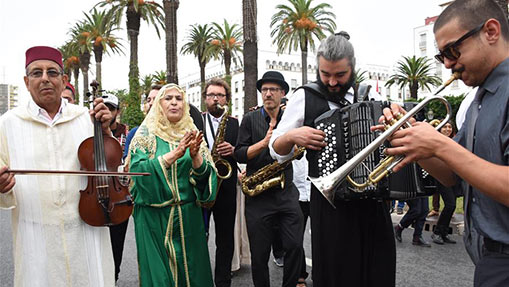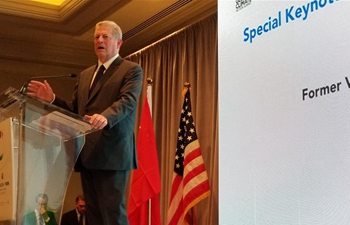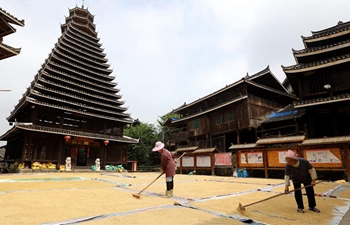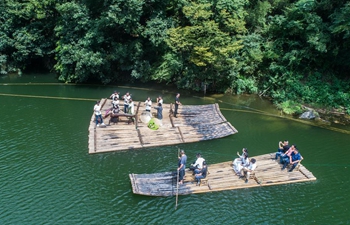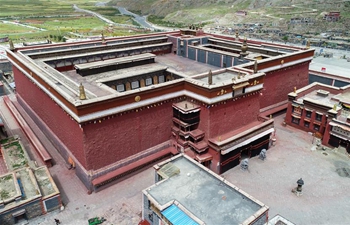HOHHOT, Sept. 14 (Xinhua) -- Bolger, a 40-year-old entrepreneur of the Mongolia ethnic group, jumped onto a truck and counted the number of Mongolian yurt parts that would be sent to Shanghai.
In his 100-square-meter yard are various styles and sizes of Mongolian yurts, each with an informational pannel out front.
"This is one of the most traditional Mongolian yurts. Instead of using steel nails, it is made out of wood and ropes. The one next to it is a modern one, which is easier to make by using steel and concrete," he said.
Bolger came to Darhan Muminggan Joint Banner in the city of Baotou, north China's Inner Mongolia Autonomous Region, 10 years ago when tourism on the grassland had just begun.
At first, he played head-horse fiddles, a traditional Mongolian bowed stringed instrument, at scenic spots to earn money. However, with more and more tourists coming, he realized that there was a lack of Mongolian yurts to accommodate the influx of visitors.
In 2014, he decided to open a Mongolian yurt factory. "We make the yurts ourselves at home. When I was little, I helped my parents when they added the felt covers to the yurts," he said. "I still remember those techniques, so I started to make yurts myself. I also went back to my hometown to learn more. My parents came and joined me as well."
In the beginning, they made yurts the traditional way, but it took half a month to make one, which was far from meeting the market's need. "A yurt's size was also restricted by the length of the wood," he said.
In 2016, Bolger turned to modern Mongolian yurt designers for help and changed the building materials and methods. He started to make yurts with steel and concrete, added windows and laid floors to make yurts as comfortable as hotel rooms.
"In the past, few yurts had bathrooms, but recently, we are designing yurts with bathrooms," he said.
Bolger sells over 40 yurts a summer and receives more than 100 orders every year from other provinces and cities in China as well as countries such as Mongolia and Japan.
"Last year, customers from Mongolia and Japan started to order yurts at my factory. Some young people from Mongolia even came to learn the technique," he said.
Now, Bolger not only uses yurt-making as a way to earn money but more importantly, a way to pass on the tradition and culture of the Mongolia ethnic group.
"The traditional yurt came into being under nomadic life, so it needed to be easy to disassemble and carry," he said. "But today, people's requirements have changed, as they want the structure to be more firm and comfortable and go with modern life. That's why we decided to make modern-style yurts, and I believe it is also one way to inherit the yurt-making technique and pass on traditional culture."
Bolger is also working with students from the College of Ethnic Arts, Inner Mongolia Normal University to re-design some daily articles in Mongolians' nomadic life and make them more suitable for today's modern life. "I want to bring those old household items back to the grassland again," he said.




